| Umělec 2005/2 >> Belarus -Germany :Forbidden Love | Просмотр всех номеров | ||||||||||||
|
|||||||||||||
Belarus -Germany :Forbidden LoveUmělec 2005/201.02.2005 Alena Boika | guerillas | en cs de |
|||||||||||||
|
Particularly populist and eternally partisan, this subject is intimately associated with contemporary Belarusian art. It cannot be disregarded that partisans always appear together with the enemy—the one against whom they can carry out their raids.
German fascist invaders were the most recent visible and real enemy. Notwithstanding the seeming remoteness of events, new technologies, appearances of multitudes of pop images and the formation of new clichés, a notion of the enemy is not only alive, but it continues to have a powerful artistic influence on inquisitive creative minds. Nowhere else is Leni Riefenstahl more adored than on the territory of the former Soviet Union, including Belarus and Russia—the two countries that suffered most during World War II. Nowhere else do so many people so admire the magnificent athletic bodies of the enemies who have slaughtered so many. Images of the enemy provoke hate, but they always do so in a sexual and alluring, albeit forbidden fashion. These projects do not so much play up the partisan theme as appeal to the image of a strong enemy, the role of partisans and create their own art mythology in contrast to the official one. But it is more likely that they constitute an indirect appeal to the image of a strong, sexual, and forbidden enemy. Although they must hate their enemy, they are instead drawn to its powerful energy of violence and thus, for some time, the energy of the victor. However, this image is strictly prohibited and made taboo. Hence, they inevitably begin to concentrate on the second participant. Still, in any art project and image a main constituent shows through as if on a negative. No partisan mythology is possible without this central core. Occupation. Mysteries. The recent sensational film by Andrey Kudinenko, Occupation. Mysteries, an existential drama with elements of a thriller, is illustrative. This film is about the partisan occupation of western Belarus during the Second World War. The young director decided not to follow the traditional interpretation of the war, and made instead an anecdotal film in which a Russian partisan-marauder, a young Belarusian villager, a member of the Komsomol (Communist Youth Union), and an insatiable Polish girl—a panienka—co-exist with each other fantastically. Although the film was praised by critics and the public at the Rotterdam and Moscow film festivals in 2004, in Belarus it was banned. Most critics identify the film’s basic ideological conflict as a deviation from the tradition in which good partisans stand in opposition to German invaders. In Belarus, the authorities proscribed the film so as not to insult veterans, and to warn youth against its negative influence. Director Andrey Kudinenko rejected military interpretation saying that he makes films „not about wars but about human beings and humanity.” Nevertheless, the story takes place in 1942 in western Belarus. There are no military operations, though. The war is shown through the occupation regime. According to film authors Andrey Kudinenko and Alexander Kachan (script writer), the occupation determined the specific character of the Belarusian situation, „There are peoples, who are fated to be occupied. Belarusians are among them. People under occupation will never learn the truth about the occupation. This film is our attempt to learn the truth.”The word Mysteries in the title describes the original genre of the film. As with west-European theater of the late Middle Ages, Belarusian mysteries are collected scenes full of references to the Bible. At the same time, the narration is in reverse order. First, we see a proverb about Adam and Eve (part 3), then, Mother (part 2), and finally, Father (part 1). The film begins with a brief prehistory of the Belarusians: „Five hundred years ago they did not know that they were Belarusians, but they had the biggest state in Europe. As time passed, they realized that Belarusians no longer had a state, and they were regarded as half-Russians or inferior Poles. Finally, Belarusians became an integral part of the Soviet population, losing their own national identity. Only some of them survived after the occupation and the war. Now Belarusians have a state, but it has been revealed that they do not exist any longer.” The image of a Belarusian woman suffering from the violence of German, Polish and Soviet occupations, runs throughout the three parts. The second and central proverb, Mother, best characterizes the inadequate Belarusian nation yearning for self-realization with the help of a strong enemy. The Proverb’s character is an authentic Belarusian woman. She is nameless; she does not speak any language as she is dumb. Having lost her child, hit and killed by a German motorcycle, she picks up a wounded German soldier and nurses him. When he flees from her she sets herself on fire in her barn. In this way the Belarusian nation dies of its own free will. There is no one who could save it or continue the tribe. Woe Be to the Victors! One should only address historical facts. In Belarus, especially its western part, people regarded German soldiers not as invaders but as liberators who would cast down the Soviets and dismiss hateful collective farms—the kolkhozes. They presented Germans with the traditional Slavic welcoming gift—bread and salt—and believed in them. Expectations did not come true. New Belarusian independence under German supervision again failed to come about, although the beginning was rather convincing: the formation of the organs of self-government, the opening of Belarusian schools and theaters. The situation radically changed due to a partisan movement initiated from the center, from Moscow. In Belarus, where a principle, „leave me alone and do not interfere with my household,” can be a national idea, no partisan movement could arise all by itself. The movement resulted in punitive methods applied by Germans, which was unique in respect to cruelty and scale. Civilians were afraid of partisans; they neither understood nor loved them. One old woman recalled how „they came, searched and found nothing to eat; so they stole an oak instead. What was it doing in the forest, anyway?” Alteration of signs occurred. However lost and altered were the lives of people, the memory of hope persisted. Moreover, a myth sprang up and rooted itself that „If it had not been for the partisans, Belarus would have been independent from Germany, and a free and developed country.” Although rarely revealed in daily communication, this myth endures. It again reveals itself in the same use of the partisan theme—a longing for a victor. No project or artistic image of contemporary art presents partisans as heroes. This is a double alteration of signs. Whereas this is in contrast to the Soviet tradition, which artificially fabricated a large-scale ideology; it is also latent respect for a powerful enemy. From this, a strong desire to gain revenge, ranging from requests for material compensation to outright provocations, follows. When a German policeman pressed a young Belarusian art student about an overdue visa, the student retorted, „Did you have a visa when you came to us in 1941?” Woe be to victors! What has become of those artists who in the 90s had begun to topple the official image of partisans as heroes? They created their own new mythology with exaggerated figures of cunning partisans and vulnerable victims with languorous eyes. Many of them are in Germany, which is natural. But there, they devote themselves to entirely different things. When one Belarusian artist met another artist in Germany, where the other one had resided for some time, he was glad, and anticipated a long conversation, but his old friend busily and nervously glanced at his watch; after 15 minutes, he said that he had to go. The Belarusian enviously thought, „This is real life and real art!” Later, he learned that his friend worked in construction, and had forgotten about art. What are they looking for there? German romanticism, Aryan order, European opportunities. What do they find? A handcart, which they fasten to their bicycle and go to the woods to meditate, to seek out solitary inspiration—the children of partisan swamps can barely survive in the bright light of united Europe. As in Belarus: they claim they don’t know each other, and rarely meet. They like to throw dust into each other’s eyes, just like in Belarus. The circuit is closed. The myth-makers found themselves free, having departed from the Belarusian partisan context. Now they have no choice, and they’re grateful to consider themselves if not in the world, then at least in the European cultural space. It is surprising to discover that the habit of looking for enemies everywhere survives and has been transformed. A person who studies in the Art Academy in Düsseldorf who has received a scholarship and with it, opportunities to develop thoroughly, suspiciously says, „No, I do not understand what they all want. Why does Germany pay for all these cultural and educational programs? There is something wrong.” My Plane Has Crashed Against the Landscape’s Mirror The climate in Belarus is gray, soft, warm, and damp. Vast expanses of flat terrain, devoid of any Russian largeness, alternate with occasional hills and a presidential ski resort in Raubichi. There is nothing much to catch the eye. Human beings have similar attributes as part of the landscape; they avoid being noticed, say little, do not laugh too loudly, and become partisans in all senses: in business, in art and in private life. They are waiting for a victor. It is apparent that in Belarus, the choice for a president, who has the prowess of a powerful sexual opponent, with paternal manners, is absolutely natural. It is no wonder that president asserted himself as a worshipper of Hitler. He does not simply let that out occasionally or merely admit it; he declares it. Because he knows or feels that this is what people expect from him. Just as a woman, who has been subjected to violence, unconsciously seeks out strong and authoritative men, Belarus will always choose such a ruler. Art only interprets and uses but always chooses the same themes. We have no choice but to listen to music arranged and recorded by Belarusian photographer Igor Savchenko, and enjoy military marches of good old Germany during the Third Reich while longing for a victor and believing in a better future. Epilogue Why Wars Break Out… When Gogi Chkalava was little, he went to kindergarten. Like all little boys, he liked to draw pictures of battles, planes and tanks. At that time, there was a legend that if someone drew a swastika, a war would inevitably break out. At that time, this symbol bore a different name, but looked approximately the same. Gogi did not believe in the legend, and drew swastikas everywhere; he did it to spite everything. What a skunk he was. There was armor against this sign though. Hundreds of red stars could save the world. So, the entire group of children, including teachers and nannies, sat and drew red stars instead of going out for a walk. But bad Chkalava played with toys. Teachers hid his paper and pens, and even tied his hands. But one time, Gogi did something irreversible. He mysteriously freed himself and drew a whole bunch of German swastika-adorned Messerschmitt planes. The planes flew over Moscow and dropped bombs with swastikas on the heads of workers. As a result, a war broke out in Afghanistan. Gogi shed crocodile tears. Since then, he no longer draws swastikas. If he ever encounters a swastika anywhere he immediately draws a hundred red stars. Evidently, he is too late, as wars never stop. Draw a hundred red stars and save the world!
01.02.2005
Рекомендуемые статьи
|
|||||||||||||
|
04.02.2020 10:17
Letošní 50. ročník Art Basel přilákal celkem 93 000 návštěvníků a sběratelů z 80 zemí světa. 290 prémiových galerií představilo umělecká díla od počátku 20. století až po současnost. Hlavní sektor přehlídky, tradičně v prvním patře výstavního prostoru, představil 232 předních galerií z celého světa nabízející umění nejvyšší kvality. Veletrh ukázal vzestupný trend prodeje prostřednictvím galerií jak soukromým sbírkám, tak i institucím. Kromě hlavního veletrhu stály za návštěvu i ty přidružené: Volta, Liste a Photo Basel, k tomu doprovodné programy a výstavy v místních institucích, které kvalitou daleko přesahují hranice města tj. Kunsthalle Basel, Kunstmuseum, Tinguely muzeum nebo Fondation Beyeler.
|


















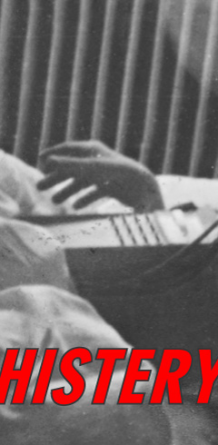






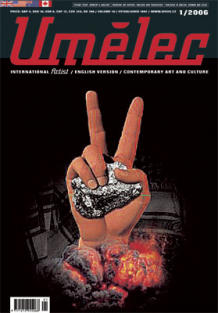




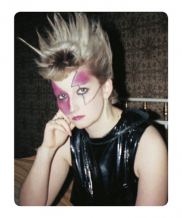
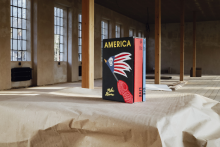
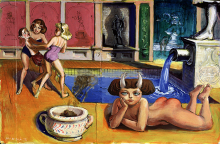
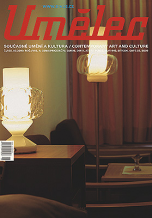


 We Are Rising National Gallery For You! Go to Kyjov by Krásná Lípa no.37.
We Are Rising National Gallery For You! Go to Kyjov by Krásná Lípa no.37.
Комментарии
Статья не была прокомментированаДобавить новый комментарий